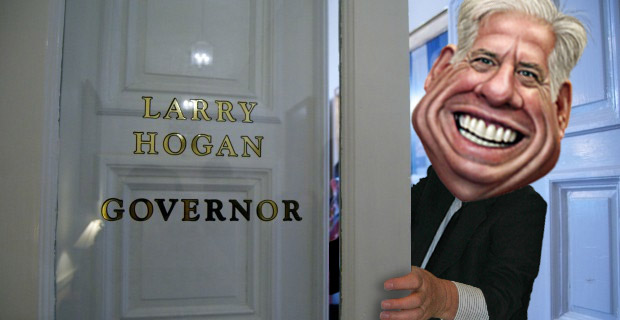Editor’s Introduction to Part II
 In the second installment examining Maryland’s disastrous health care exchange site launch, longtime auditor Charlie Hayward (full bio below) takes a walk through the status of audits and legal maneuvering to assign blame and recoup money. Auditors and lawyers will begin structured, even forensic work, to determine what went wrong and why Maryland’s exchange fared so much worse than those in other states.
In the second installment examining Maryland’s disastrous health care exchange site launch, longtime auditor Charlie Hayward (full bio below) takes a walk through the status of audits and legal maneuvering to assign blame and recoup money. Auditors and lawyers will begin structured, even forensic work, to determine what went wrong and why Maryland’s exchange fared so much worse than those in other states.
Hayward looks at the surprising scope and nature of damages of the failure and explains why both the state and its contractor Noridian bear responsibility. He predicts resolution could be complex, costly, and time consuming.
Hayward also offers two alternatives (a $51.4 million performance bond or arbitration) to taking the dispute to court, arguing that all parties should avoid litigation.
Click here for Part I on failures of leadership.
By Charlie Hayward
CharlieHayward@MarylandReporter.com
Obamacare’s 2015 enrollment cycle is just around the corner; new enrollment begins in seven months, on Nov. 15. We can be assured that the spin will intensify via taxpayer-funded marketing aimed at rebuilding the damaged health exchange brand that will begin early and be repeated ad nauseam. Press releases and public statements will abound.
We’ll hear Maryland’s inaugural enrollment year was a seminal achievement, and the exchange and its agents deserve high praise for heroic efforts meeting signup goals against all odds. And ambitious IT projects go bad all the time. We learned our lesson, just look at the costs we are saving by our prudent decision to launch another state’s already-proven website.
But questions will continue to swirl. If IT projects go bad all the time, why did Connecticut’s succeed?
Auditors, lawyers behind the scenes
Behind the scenes, meanwhile, auditors (and lawyers involved with the dispute resolution) will quietly grind on with their structured, even forensic, work—ultimately laying bare imprudent conduct. The audits will be methodical, politically neutral, and entail unfettered access to documents, but will not be the final word because audit recommendations are advisory; final decisions rest with agency heads.
Every indication so far is that the exchange and other state officials will cooperate fully. Here’s where the various audits and investigations stand, and a bit about the differences among them:
- The state’s Office of Legislative Audits (OLA) will perform two audits. A fiscal audit will evaluate internal control surrounding how money was spent and evaluate if spending followed prevailing laws and regulations. A performance audit will assess relative costs and benefits and whether the state produced intended results or other effects that were outside Obamacare’s objectives. Fieldwork will begin this summer but OLA’s reports will not be issued until about mid-2015.
- Office of Inspector General in the U.S. Department of Health and Human Services began its audit last month. Auditors will evaluate internal control over spending and procurement, reasonableness of costs, and whether the state complied with grant requirements. The inspector general’s office also will evaluate compliance by federal employees with a myriad of laws and regulations requiring the federal government to be a good steward of taxpayer resources. Thus, the inspector general’s office can evaluate HHS’ decision to pay for the state’s claims that millions paid to Optum/QSSI and Deloitte are somehow eligible under the 2012 “Level Two” cooperative agreement/grant.
If the inspector general’s office concludes the state claimed unallowable costs it can recommend reductions to grant funding and funding recovery. The inspector general’s office expects to issue its report by December 2014.
- Noridian and the state attorney general (AG) will conduct forensic investigations principally designed to defend their side and blame the other. All-out litigation seems likely based on the respective sides’ latest public statements. The results of the forensic work will be published in court filings to be entered after the six-month “standstill” period (wherein the state and Noridian agree not to sue) ends in about five months.
Each side has major culpability, yet incredibly each will admit little and blame the other. Noridian’s version will assert that the federal government made too many last-minute demands. And that Noridian has limited or no liability based on a long list of extra-contractual, conflicting direction from the state.
Who Was Damaged?
This whole affair caused widespread damage; far more than most people realize. One of the most improbable examples is a real concern that Noridian’s problems in Maryland could raise insurance rates in North Dakota. Consumers and prospects that never signed up were adversely affected by a website that was never capable of processing any enrollments except those with the most basic, cookie-cutter information.
In Maryland, the ill effects weren’t limited to $200 million or so spent unnecessarily by the exchange; costs were incurred unnecessarily in many other places:
- Several of the state’s departments and agencies that are business partners of the exchange are likely to have incurred millions unnecessarily. To wit: the exchange’s parent organization, DHMH, and the Department of Human Resources, which manages other social-service programs for the disadvantaged whose eligibility determinations were supposed to be transferred to the exchange software platform. The state’s Office of Attorney General is incurring expenses to study the Noridian dispute, and may need to hire outside counsel if it goes to court.
- Federal partners spent big money to cope with Maryland’s website problems. They are now assessing tens of millions of fresh grant money to underwrite the state’s second attempt at creating an acceptable website.
- Private business partners—i.e., the insurance carriers (CareFirst, Evergreen, KaiserPermanente, UnitedHealth) incurred substantial unplanned costs. Corporate shareholders seem to be on the hook because of Obamacare’s 20% cap on insurers’ administrative costs.
And millions of taxpayer-funded damages will continue to accrue, probably not ending until 2015 or 2016. For instance, taxpayers will foot the state’s legal bills and could be on the hook for contractors’ legal costs. How will restitution play out?
Enter the Lawyers
The state can’t walk away from the wreckage of its failed website and the bonfire of taxpayer dollars. The state must advance a multi-pronged battle to justify its conduct, protect its interests and preserve its claims—all consistent with its position that Noridian deserves almost exclusive blame for its opportunistic bid and incompetent performance.
Presumably, the state will convey (prior to litigation) a settlement proposal to Noridian. To do so, the exchange must first compile specific damages. But while damages can be described, many can’t be readily quantified. Some that can be quantified cannot be recovered. In theory, damages fall within three categories: direct, indirect, and consequential. They include:
Direct
1. Unnecessary re-work due to two exchange platform builds.
2. Manual workarounds by the exchange and countless (more than a dozen) business partners due to website dysfunction.
3. Computer programming incurred between October 1 to date to triage the platform, not fix it. (The site has not shut down yet).
Indirect
Executive and administrative costs incurred by the exchange, DHMH, Maryland Insurance Administration, DHR and, to a lesser extent, other state agencies.
Consequential
1. Wasted marketing—including brand-building, product sales and, after the launch, damage control.
2. Reputational damage.
3. Compromised enrollment numbers.
The litigation will be complex because there is so much contributory negligence on each party. A jury would need to decide what compensation is due Noridian versus what the state paid, who is responsible and what damages are owed.
According to Noridian, the exchange directed it to make material changes to work not required by the fixed-price contract. Some of these changes were reductions to work for the sake of salvaging key functionality when it became apparent time would otherwise run out to meet the Oct. 1 deadline. Such reductions (and additions) should have been formalized in “deductive” change orders in Noridian’s contract price.
Were all those change orders formalized? If Noridian’s claims are accurate, then no change orders were negotiated. And now equitably pricing them will be made far more difficult because negotiations will be wrapped into the larger dispute.
The state’s principal claims will be against Noridian. Since Noridian’s key subcontractors are culpable, the parties’ lawyers will need to file several layers of arguments required by rules of civil procedure such that all parties are called to answer for their conduct. Expect a full complement of court filings: claims, counterclaims, cross-claims and counter-cross claims involving Noridian’s key subcontractors, particularly IBM and EngagePoint.
If litigation commences, risks to the opposing parties are substantial because each of the principal parties is deeply responsible. The legal arguments will seem one-sided and objectively unsound to laypeople that aren’t familiar with the arcane legal criteria relevant to this mess. Taxpayers will pay for the state’s costs of this charade, unless litigation can be avoided.
How Will This End?
No one knows, but this could get ugly. O’Malley says he will “…see IBM in court.” Did he speak out of anger, or has the AG excluded all reasonable alternatives?
Litigation should be proceeding only as a last resort. A concept in philosophy known as Occam’s razor says it is wrong to attempt to employ complex means when simple ones suffice.
Noridian was required to maintain a performance bond, a form of insurance that would take effect if Noridian failed to complete work to the state’s satisfaction. The bond was required in the full amount of Noridian’s contract, $51.4 million.
Since the state has publically cast blame on Noridian, why doesn’t it send a $51 million bill to the surety bond holder?
It isn’t that simple. To collect, the state has several legal hurdles designed in law to protect the surety; the state must inform the surety bond holder on a timely basis of all significant changes to the scope of Noridian’s work; and convey timely notification of Noridian’s default; refrain from making progress payments for work not completed; and avoid paying for defective work.
The performance bond was a valuable option for the state, especially if there was any reasonable possibility Noridian might declare bankruptcy. So the exchange had an absolute duty to preserve all rights of collecting from the insurance company by ensuring none of the surety’s defenses could be raised.
If the state didn’t preserve all rights of collection, then either it must have justification, or the auditors may conclude the state was negligent. This would have the effect of putting state taxpayers on the hook.
The evidence suggests skepticism is needed about the exchange’s diligence in collecting on the policy. The requirement for this insurance ended at the time Noridian was dismissed. A source in the exchange told me Noridian’s dismissal was not done via formal letter. Noridian was terminated in a phone call.
Binding arbitration may be another option to litigation. However, the parties would need to negotiate conditions because arbitration is not provided in Noridian’s contract.
In the end, the state has a duty to maximize recovery, minimize legal and other costs and resolve this matter as soon as possible. It won’t be easy.
Charlie Hayward spent more than 30 years performing Government Accountability Office full-scope “yellowbook” audits and served as a partner in two accounting firms. He retired in 2007 from Cotton & Company LLP, where he was a partner and principal financial auditor of the firm’s audit practice group. He led audits of many federal agencies, including the U.S.Department of Justice, Department of Commerce, Government Accountability Office and the Small Business Administration. He earned a bachelor’s degree in Business Administration from Bowie State College, and attained every auditing-related certification, including CPA, CISA, CFE and CGFM. Since retiring, he has worked on a few consulting assignments and been a contributing writer for MarylandReporter.com, specializing in audit coverage.
Related story:
Analysis: Health Exchange Mess Part I: Failures in leadership






Recent Comments